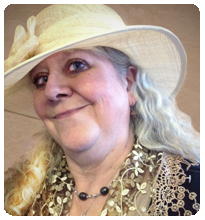‘If you have ever stood on the edge of a London Underground platform with your feet obediently behind the yellow line waiting for the arrival of the next train and feeling the pressure of the crowd building behind you as the train roars into the station and you briefly think … what if. This is the book for you.’ Gary Powell
Mind The Killer
Gary Powell, a long serving police officer has written a crime novel set largely beneath London’s streets – in the underground rail system known as the Tube. If you are interested in knowing how real police go about their daily job, and what that can involve, this is a good read. A warning though – like work, this story is not for the squeamish.
Here’s what Gary Powell has to say about his old job and new book.

When choosing a book to read, the location in which the book is set is usually at the forefront of my mind. I enjoy reading fiction with strong characters set in locations – on the whole – familiar to me, for example: Peter James’ Roy Grace series set in Brighton or Mark Billingham’s, Tom Thorne series set in London.
My early reading centred on horror, not crime, with the James Herbert books: The Fog and The Rats set in many London locations including the London Underground system. Even though the plots were a little imaginative to say the least, the real-life locations made the narrative horribly believable and fuelled my imagination.
So, when it comes to my own writing, location/setting and the use of pragmatic, fast-paced dialogue are integral to making my narrative stand out and make the reader believe what they are reading, at that moment, is in fact real – not fictional.
 In my crime novel Mind the Killer I have used my in-depth knowledge of London’s transport system (having been a police officer for thirty-three years in the capital) to enhance a reader’s experience. Being able to visualise fictional events at real locations is something I enjoy when reading and writing as well. Mind the Killer not only has scenes at many London Underground stations but also some well-known landmarks such as St Paul’s Cathedral.
In my crime novel Mind the Killer I have used my in-depth knowledge of London’s transport system (having been a police officer for thirty-three years in the capital) to enhance a reader’s experience. Being able to visualise fictional events at real locations is something I enjoy when reading and writing as well. Mind the Killer not only has scenes at many London Underground stations but also some well-known landmarks such as St Paul’s Cathedral.
Couple this with the sights and sounds, the smells and the tangible feel of these locations, I believe, makes the narrative jump from the page. Mind the Killer will take you from the zealous and often antagonistic atmosphere of a London football match to the dark, dank surroundings of a disused lift shaft, a sterile mortuary to a fast-moving police surveillance operation.
Just as important as location is the dialogue used by my characters. Here I tend to fall back on many of the personalities – both good and bad – that have crossed my path during my career. I do not base any of my fictional characters on people that I know –a question I frequently get asked, especially by former colleagues. But I do utilise characteristics, especially in relation to dialogue. Any member of the emergency services will tell you that a dark sense of humour is needed to deal with the everyday occurrences they have to face. I have sat in a pub many times with colleagues after a particularly demanding day – maybe a terrorist attack, a suicide or a violent episode when one of your number has been badly beaten or worst of the worst a crime involving children. Over a few pints we would de-brief the day, get it off our chests so that the next morning we can start afresh. To be honest a fly-on-the-wall would find our conversations deeply disturbing. This culture of ‘getting on with it’ is frowned upon by senior officers in today’s police service; some who have little idea what the front-line police officer has to deal with in modern-day Britain. This banter and forthright views, together with a very dark sense of humour is a realistic feature that I endeavour to pass on in my character’s dialogue and has been kindly mentioned in several of the reviews the book has received so far. Of course, not all the humour is dark. DS Marcia Frost: ‘The CSI is here, she’s from New Zealand.’ DI Ryan McNally: ‘Wow that’s a long way to come. Didn’t we have anyone nearer?’
The use of real locations in my writing, I believe, gives the reader a sense of belonging and security, coupled with a dialogue which dramatically pushes the narrative along at a break-neck speed.
 Find Gary and his books – fact and fiction – on Amazon and other online books stores.
Find Gary and his books – fact and fiction – on Amazon and other online books stores.
Amazon.co.uk: Gary Powell: books, biography, latest update
Mind the Killer: Amazon.co.uk: Powell, Gary: Books




